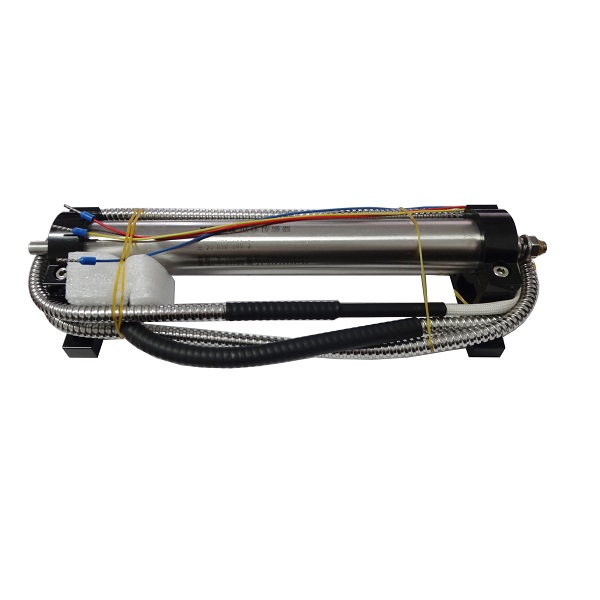
The LVDT Position Sensor HTD-100-3 is designed and produced according to industry standards. It is a 6-wire displacement sensor that can be extended with cables or processed according to customer requirements. When using the sensor HTD-100-3, it should be noted that the two lines engraved on the core rod are in a linear travel zone, and the insertion direction of the core rod should recognize the "entry" mark on the end face. If inserted incorrectly, it will affect normal use and cause abnormal operation.
Advantages
1. Durable performance - Due to its unique design, there is no physical contact between sensing elements and the sensor is not worn out.
2. Friction free operation - ideal for material testing or high-resolution dimensional measurement systems.
3. Good durability - using high-quality raw materials, excellent design and processing, able to withstand various harsh environments.
4. Quick response to changes - The position of the iron core can be quickly responded to and adjusted.
Install
The installation of LVDT Position Sensor HTD-100-3 requires selection and design based on different types and specific application scenarios. Generally speaking, installing a displacement sensor requires attention to the following aspects:
1. Installation position: The installation position of the displacement sensor should be as close as possible to the measured object to ensure measurement accuracy and reliability. At the same time, the installation position needs to avoid being affected by factors such as mechanical vibration and electromagnetic interference, in order to ensure the stability of the measurement.
2. Installation method: The installation method of displacement sensors also needs to be selected based on specific application scenarios. For example, for non-contact displacement sensors, fixed installation or clamping installation can be used; for contact displacement sensors, clamping or welding methods can be used.
3. Connection method: When installing a displacement sensor, it is necessary to choose the appropriate connection method based on the interface type and signal output method of the sensor. Generally speaking, cable connections, plug connections, wiring terminals, and other methods can be used to ensure signal transmission and stability.
- English
- French
- German
- Portuguese
- Spanish
- Russian
- Japanese
- Korean
- Arabic
- Irish
- Greek
- Turkish
- Italian
- Danish
- Romanian
- Indonesian
- Czech
- Afrikaans
- Swedish
- Polish
- Basque
- Catalan
- Esperanto
- Hindi
- Lao
- Albanian
- Amharic
- Armenian
- Azerbaijani
- Belarusian
- Bengali
- Bosnian
- Bulgarian
- Cebuano
- Chichewa
- Corsican
- Croatian
- Dutch
- Estonian
- Filipino
- Finnish
- Frisian
- Galician
- Georgian
- Gujarati
- Haitian
- Hausa
- Hawaiian
- Hebrew
- Hmong
- Hungarian
- Icelandic
- Igbo
- Javanese
- Kannada
- Kazakh
- Khmer
- Kurdish
- Kyrgyz
- Latin
- Latvian
- Lithuanian
- Luxembou..
- Macedonian
- Malagasy
- Malay
- Malayalam
- Maltese
- Maori
- Marathi
- Mongolian
- Burmese
- Nepali
- Norwegian
- Pashto
- Persian
- Punjabi
- Serbian
- Sesotho
- Sinhala
- Slovak
- Slovenian
- Somali
- Samoan
- Scots Gaelic
- Shona
- Sindhi
- Sundanese
- Swahili
- Tajik
- Tamil
- Telugu
- Thai
- Ukrainian
- Urdu
- Uzbek
- Vietnamese
- Welsh
- Xhosa
- Yiddish
- Yoruba
- Zulu
- Kinyarwanda
- Tatar
- Oriya
- Turkmen
- Uyghur













